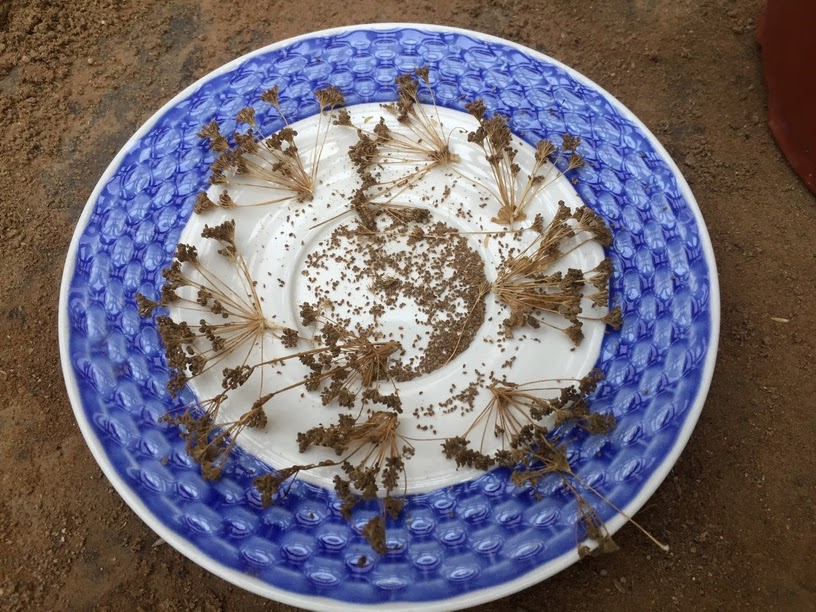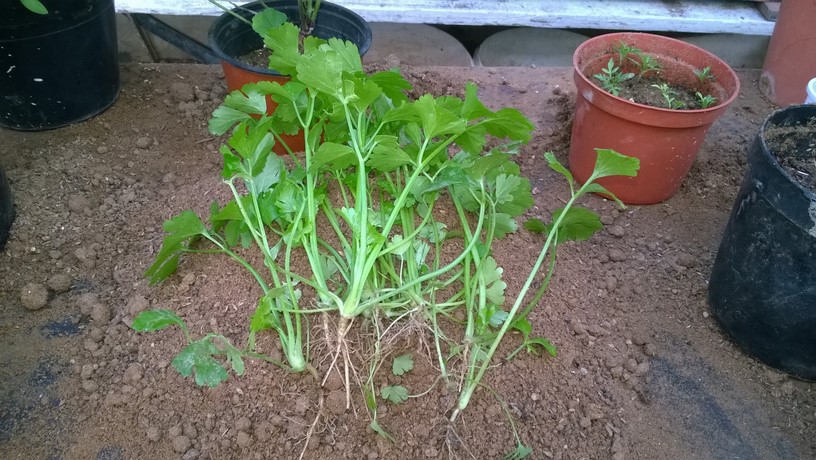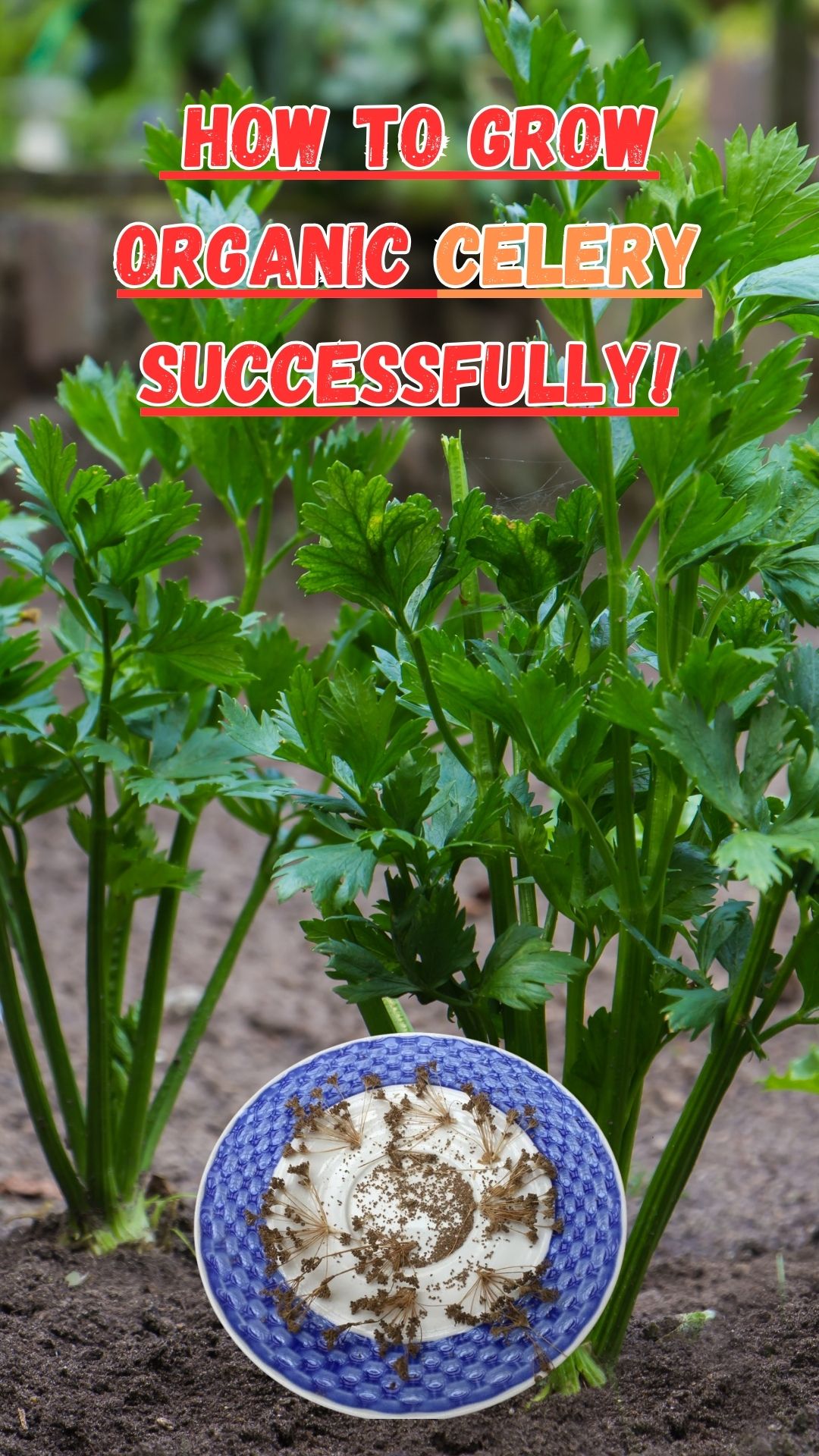Celery is a very adaptable and healthy vegetable that you can grow in your own garden. It is also a great way to support a sustainable and environmentally friendly lifestyle. In this detailed guide, we will go over everything you need to know to grow organic celery, from choosing the best variety to harvesting and storing the abundant crop.
Introduction to Organic Celery
This cool-season vegetable, technically called Apium graveolens, is a member of the Apiaceae family and is highly prized for its unique flavor and crunchy texture, which make it a popular addition to salads, soups, and snacks. Organic celery is grown without the use of artificial fertilizers, herbicides, or pesticides, which improves soil health and lessens its impact on the environment.
Benefits of Growing Organic Celery
Health Benefits
Eating organic celery can help with better digestion, decreased inflammation, and lowered blood pressure. It is a nutritional powerhouse that is high in vitamins, minerals, and antioxidants. It is also a wonderful source of vitamin K, vitamin C, potassium, and dietary fiber.
Environmental Benefits
By growing organic celery, you are supporting sustainable agricultural practices and reducing the exposure to harmful chemicals. Organic farming methods promote biodiversity, soil health, and water conservation, leading to a healthier ecosystem.
Choosing the Right Celery Variety
Selecting the appropriate celery variety is crucial for successful cultivation. Some popular organic celery varieties include 'Tango,' 'Utah,' and 'Giant Pascal.' Consider factors such as climate, disease resistance, and intended use (fresh consumption or storage) when choosing the variety best suited for your garden. Preparing the Soil for Organic Celery
Soil Quality
Organic celery thrives in well-draining, fertile soil with high organic matter content. Conduct a soil test to assess the nutrient levels and pH balance. Amend the soil with organic compost to improve its structure and fertility.
Watch Adding Chicken Manure to The Garden Soil and It's Benefits
pH Level
Celery prefers a slightly acidic to neutral soil pH ranging from 6.0 to 7.0. Adjust the pH as needed using natural amendments such as lime or sulfur to create an optimal growing environment for the plants.
Composting
Incorporate compost into the soil to enhance its nutrient profile and promote microbial activity. Compost provides a balanced supply of essential nutrients and improves the soil's ability to retain moisture.
Planting Organic Celery
Seed Starting
Start celery seeds indoors 10-12 weeks before the last frost date in your region. Use seed trays or small pots filled with a seed starting mix. Keep the soil consistently moist and maintain a warm temperature of around 70°F for successful germination.
Transplanting
Once the seedlings have developed several true leaves, transplant them into the prepared garden bed. Space the celery plants 10-12 inches apart to allow ample room for growth. Ensure they receive adequate sunlight and consistent moisture.
Watch How To Plant Celery Seedlings In The Garden
Caring for Organic Celery
Watering
Organic celery requires regular watering to keep the soil consistently moist, especially during dry periods. Avoid overwatering, as it may lead to rot and disease. Use a soaker hose or drip irrigation to deliver water directly to the base of the plants.
Fertilizing
Apply organic fertilizer, such as well-decomposed compost or aged manure, to provide a steady supply of nutrients to the celery plants. Side-dress the plants with compost during the growing season to support healthy growth and development.
Mulching
Mulch around the celery plants with organic materials like straw or shredded leaves to conserve moisture, suppress weed growth, and maintain a stable soil temperature. Mulching also helps prevent soil compaction and erosion.
Pest and Disease Management
Common Pests
Celery is susceptible to pests such as aphids, celery leaf miner, and slugs. Monitor the plants regularly for signs of pest infestation, including yellowing leaves, holes, or sticky residue.
Natural Pest Control Methods
Use eco-friendly pest control techniques like neem oil and organic insecticidal soaps, or introduce beneficial insects like ladybugs and lacewings to keep pests away from your home.
Blanching Celery in The Garden
Blanching celery in the garden is done to produce a milder, less bitter flavor and a more tender texture in the stalks. Here's why and how to blanch celery in the garden:
Why blanch celery in the garden?
Blanching reduces the bitterness in celery by preventing sunlight from reaching the stalks, which helps to inhibit the production of chlorophyll. This process results in a more appealing taste and texture.
How to Blanch Celery In The garden
- Choose celery varieties that respond well to blanching, such as Pascal celery.
- When the celery plants are about 12-16 inches tall, tie the outer stalks together loosely using twine or strips of cloth.
- Wrap the tied stalks with paper, cardboard, or specially designed celery collars to block sunlight from reaching the inner stalks.
- Ensure that the blanching material is secure but not too tight to allow the celery to continue growing.
- Check the celery regularly and harvest once it reaches the desired tenderness, usually after 2-3 weeks of blanching.
By following these steps, you can successfully blanch celery in your garden to enhance its flavor and texture.
Harvesting Organic Celery
Celery is typically ready for harvest 3-4 months after transplanting. Harvest the outer stalks by cutting them at the base with a sharp knife, allowing the inner stalks to continue growing. Selectively harvest stalks as needed, or harvest the entire plant at once for preservation.
Storing and Using Organic Celery
Storage Tips
Store freshly harvested organic celery in the refrigerator, wrapped in damp paper towels and placed in a perforated plastic bag to maintain crispness. Alternatively, blanch and freeze celery for long-term storage and use in cooked dishes and soups.
Culinary Uses
Organic celery gives a delicious crunch and flavor to a variety of dishes, such as casseroles, stir-fries, and salads. It can also be used to make refreshing juices, smoothies, and flavorful stocks and broths.
Conclusion
Growing organic celery is a rewarding endeavor that allows you to savor the freshness and nutritional benefits of homegrown produce. By following the recommended practices for soil preparation, planting, and maintenance, you can cultivate a thriving celery crop while promoting sustainability and environmental stewardship. Embrace the joy of growing your own organic celery and relish its wholesome goodness in your favorite dishes.
Like This? Pin it for Later!
Affiliate Disclosure: In transparency and compliance with legal guidelines, please be aware that some of the links on this site are affiliate links. These are carefully chosen products that I have personally used, tested, and genuinely recommend. When you click and make a purchase through these links, I may earn a small commission, at no additional cost to you. This commission helps support the maintenance of this site, allowing me to continue providing valuable content and recommendations. Rest assured, my priority is to offer authentic and reliable information, and I only affiliate with products that align with the values and standards I uphold. Your trust means everything to me, and I appreciate your support. If you have any questions or concerns, please feel free to reach out. Thank you for being a valued part of our community!




